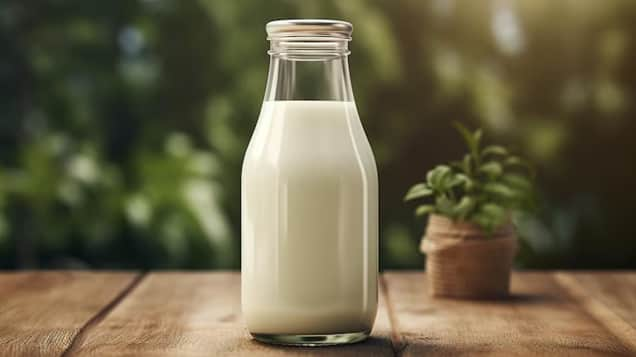From IoT-enabled herd monitoring to cold chain logistics and AI-powered herd management, technology is becoming central to the dairy sector’s transformation. These tools are improving not just milk yield but also traceability and product quality; key to gaining consumer trust.

India’s booming food and beverage (F&B) sector is riding on strong agricultural fundamentals, with dairy emerging as a powerful growth engine. According to Seetharaman Raghupathi, Executive Director of the National Dairy Development Board (NDDB), dairy contributes a significant 25% to the sector’s overall value, making it a cornerstone of rural livelihoods and nutrition security.
“India’s food and beverage sector is expanding rapidly, underpinned by 180 million hectares of arable land and a food processing industry valued at INR 75 trillion,” Raghupathi said. “With over 40% of consumer expenditure going toward food, dairy alone is worth INR 12 trillion, thanks to India producing one-fourth of the world’s milk.”
He highlighted that India’s dairy ecosystem is powered by 17 million farmers across 235,000 villages, with women comprising 35% of the workforce. Cooperatives play a vital role, returning 75% of the consumer rupee back to farmers, channelling INR 2.1 billion daily into the rural economy. Upcoming initiatives including White Revolution 2.0, which aims to establish 75,000 new dairy cooperatives by 2028–29, are set to amplify this growth trajectory.
India’s rich dietary diversity ranging from vegan to vegetarian, eggetarian, and non-vegetarian—has historically supported a balanced coexistence of food choices. In this evolving landscape, plant-based and lactose-free alternatives are not seen as a threat to traditional dairy, but as a natural extension of consumer choice.
Girish Chitale, Director of Chitale Dairy, shared his perspective with FE Retail. He said, “Today’s lifestyle changes—remote work, improved connectivity, digital payments, and the explosion of e-commerce and quick commerce—are all reshaping food consumption. At the same time, technologies like AI and machine learning are helping dairy businesses forecast demand and manage supply more efficiently, enabling both traditional and alternative dairy segments to stay agile.”
The industry’s momentum is not without its challenges. Soaring input costs, from fodder and fuel to logistics, are putting immense pressure on profitability especially for cooperatives and small-scale farmers.
“In this scenario, the solution lies in innovation and scale,” said Chitale. “Farmers are adopting scientific techniques, better genetics, and aggregate farming models. These not only improve yields and efficiency but also help absorb costs without directly affecting consumers.”
He emphasized that organized players such as Amul, Mother Dairy, and private brands are instrumental in formalizing India's highly fragmented dairy value chain. “At Chitale Dairy, we’re deploying interventions like mobile X-ray and ultrasound clinics, affordable silage-making tools, and the use of progeny-tested and sorted semen. These initiatives, coupled with farmer training, are improving productivity and enhancing incomes in rural India.”
From IoT-enabled herd monitoring to cold chain logistics and AI-powered herd management, technology is becoming central to the dairy sector’s transformation. These tools are improving not just milk yield but also traceability and product quality; key to gaining consumer trust.
However, Chitale cautions that for such innovations to scale, the focus must shift toward self-sustaining models rather than heavy dependence on subsidies. “Technology should drive profitability. Government support should step in only during extreme supply-demand disruptions—not as a crutch,” he said.
Despite producing nearly 24% of the world’s milk, India’s contribution to global dairy exports remains underwhelming; at just 0.25% of international trade. The reason? A large domestic market that consumes most of what is produced.
To improve global competitiveness, experts stress the need to enhance domestic distribution, ensure consistent quality, and raise standards in food safety, packaging, and pricing.
“Indian consumers deserve access to the same quality of packaged dairy that’s available internationally—and at fair prices,” Chitale said. “By bridging this gap, we not only improve domestic satisfaction but also position Indian dairy producers for fairer returns and stronger export potential.”
As India’s dairy industry enters a new era, it faces the dual challenge of preserving its cooperative roots while embracing a future led by innovation, efficiency, and sustainability. With rising consumer expectations and evolving market dynamics, the sector’s ability to adapt will determine how well it thrives, both at home and on the global stage.
Empower your business. Get practical tips, market insights, and growth strategies delivered to your inbox
By continuing you agree to our Privacy Policy & Terms & Conditions
